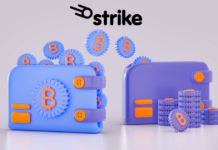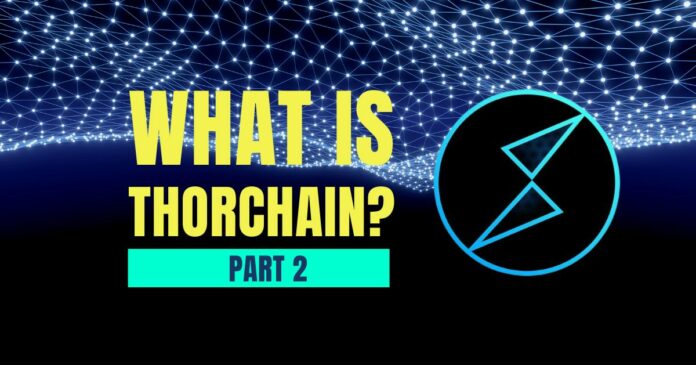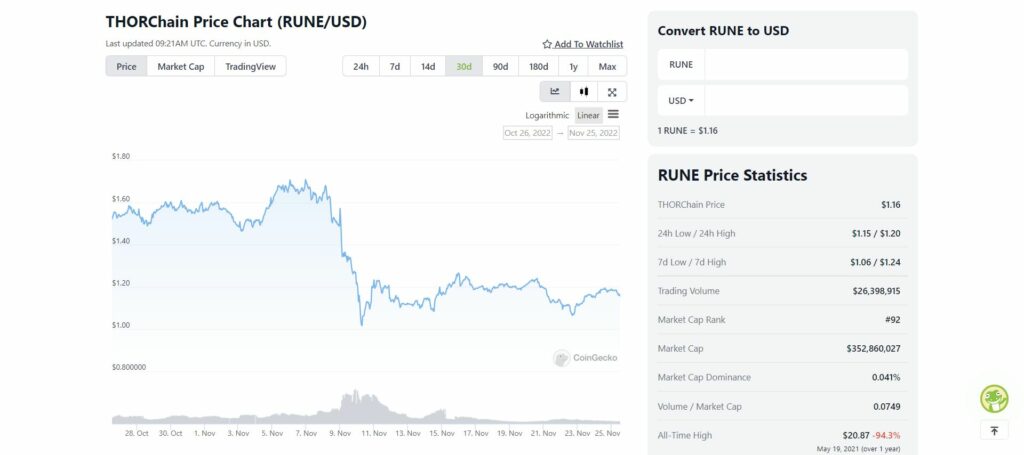THORChain is a cross-chain blockchain that offers swapping with native tokens. We answer 4 popular questions about THORChain. This is Part 2 of our articles about THORChain. Here’s a link to Part 1.
So, let’s dive in and see what THORChain has to offer.
When Was THORChain Launched?
The initial THORChain team got together back in 2018. They took part in a Binance Dexathon. So, this developed in what we now know as THORChain. In July 2019, they organized an IDO and managed to raise $1.5 million.
The simple bullish case for @THORChain
The biggest crypto2crypto pairs are BTC <> USDT and BTC <> ETH. Yet there is only one place where you can trade in a decentralized way.
Wallets/Dexes NEED to support these pairs, and there is only one integration that gets them there.
— THORChad (@ThorChad) November 23, 2022
They also launched their first DEX in July 2019 on the BNB chain. This was BEPswap. Here you can swap all possible BEP2 tokens. In April 2021, they launched the multichain chaosnet. This allowed for cross-chain transfers between a handful of blockchains. For instance, Bitcoin, Ethereum, and Litecoin. However, this saw no less than three back-to-back hacks in July 2021. The hackers netted $13 million.
Nonetheless, THORChain bounced back. They managed to sort out all bugs, code, and security issues. This resulted in being back in full force by October 2021. Currently, they support eight blockchains with cross-chain options.
What Is the THORChain Coin?
THORChain has its native coin, the RUNE token. They use it in each pair in their pools. Shortly, I will explain how their pools work. In the meantime, each pool has a 1:1 ratio with RUNE. So, a pool with $10,000 in ETH will also need $10,000 worth of RUNE.
The initial supply was 1 billion tokens, but in October 2019, they burned 50% of the max supply. In other words, currently there is a max supply of 500 million RUNE tokens.
THORChain nodes pic.twitter.com/nqsC9sRtCA
— THOR InfoBot (@THOR_InfoBot) November 24, 2022
There are three use cases for the RUNE token.
- Security — All node operators must bond twice as many RUNE as the number of staked RUNE. This bonded RUNE makes sure that the node operators act in the best interest of the network. It provides network security. In total, the network needs three times the amount of RUNE compared to non-RUNE assets locked. 1:1 in the pools and 2:1 bonded by the node operators.
- Governance — If you hold RUNE, you can vote on decisions. These influence the direction of the network. For example, which asset or chain to prioritize.
- Incentives — Both liquidity providers and node operators receive block rewards in RUNE. They also receive swap fees in RUNE as rewards. Furthermore, you can pay gas fees in RUNE.
The current price is $1.17 with a market cap of $352 million. Out of the 500 million max supply of RUNE, 300.7 million circulate already. Below is a picture of the 30-day RUNE price chart.
Source: CoinGecko
Where to Buy the THORChain Coin?
The RUNE token is available on all major CEXs For example, Binance, Gate.io, KuCoin, Crypto.com, or Kraken. The THORWallet DEX has plenty of RUNE pairs on offer. This is another sample of a non-custodial wallet option. As the name implies, they are part of the THORChain ecosystem. They also offer an interesting APY on their native token or other tokens. Furthermore, THORWallet is also multi chain. Plenty of good reasons to visit THORWallet.
There are also plenty of smaller local CEXs who offer the RUNE token. For instance, Bitazza and Zipmex in Thailand and Singapore. In Indonesia, TokoCrypto offers RUNE.
How Does THORChain work?
THORChain works different compared to other cross-chain protocols. The most significant difference is that there’s no need to wrap assets before you swap them. This sets THORChain apart from other protocols. It makes them unique. They use native tokens or assets. This gives autonomous and transparent swaps.
Here’s a sample of how a swap works on THORChain. For this sample, we swap BTC to ETH. So, BTC arrives at the THORChain network and goes to a RUNE/BTC pool. Here, BTC swap to RUNE. Now this RUNE goes to a RUNE/ETH pool. Here, the RUNE swaps to ETH. The swapper now receives ETH from a THORChain vault. As you can see, there’s no need to wrap anything. All swaps happen with native tokens.
There are four different users in the ecosystem.
- Swappers — They swap assets in liquidity pools.
- Liquidity providers — They earn rewards by adding liquidity to pools.
- Node operators — They bond RUNE and receive rewards for securing the network.
- Traders — There are arbitrageurs who watch and balance the pools. When they observe price differences between exchanges, they can make a profit. They regulate the prices naturally. As a result, THORChain doesn’t need oracles.
Jump into #DeFi Sir/Lady!
Forget #centralized entities.
Use your wallet, zen, No #KYC!
Use any interface of @THORChain, there are several@THORSWap https://t.co/OUwv48onX7@THORWalletDEX https://t.co/a4nw83XxqX@xdefi_wallet https://t.co/UE0DX862Fs
Choose your #DEX =)$RUNE pic.twitter.com/0LpdwIDSUO
— Juggernaut ⚡ᚱ ⚒️ (🎭,🍫) ☢️ (@Fakk2) November 25, 2022
So, THORChain is the vault manager. As such, they keep an eye out on all deposits and withdrawals. To price assets, they use the pool ratios.
⬆️For more cryptocurrency news, check out the Altcoin Buzz YouTube channel.
⬆️ Check out our most up-to-date research, NFT and Metaverse buy, and how to protect your portfolio in this market by checking out our Altcoin Buzz Access group. And for a limited time, it’s FREE. Just click the link and try it today.
The information discussed by Altcoin Buzz is not financial advice. This is for educational, entertainment, and informational purposes only. Any information or strategies are thoughts and opinions relevant to the accepted levels of risk tolerance of the writer/reviewers and their risk tolerance may be different than yours. We are not responsible for any losses that you may incur as a result of any investments directly or indirectly related to the information provided. Bitcoin and other cryptocurrencies are high-risk investments so please do your due diligence. This article has been sponsored by THORWallet. Copyright Altcoin Buzz Pte Ltd.




























